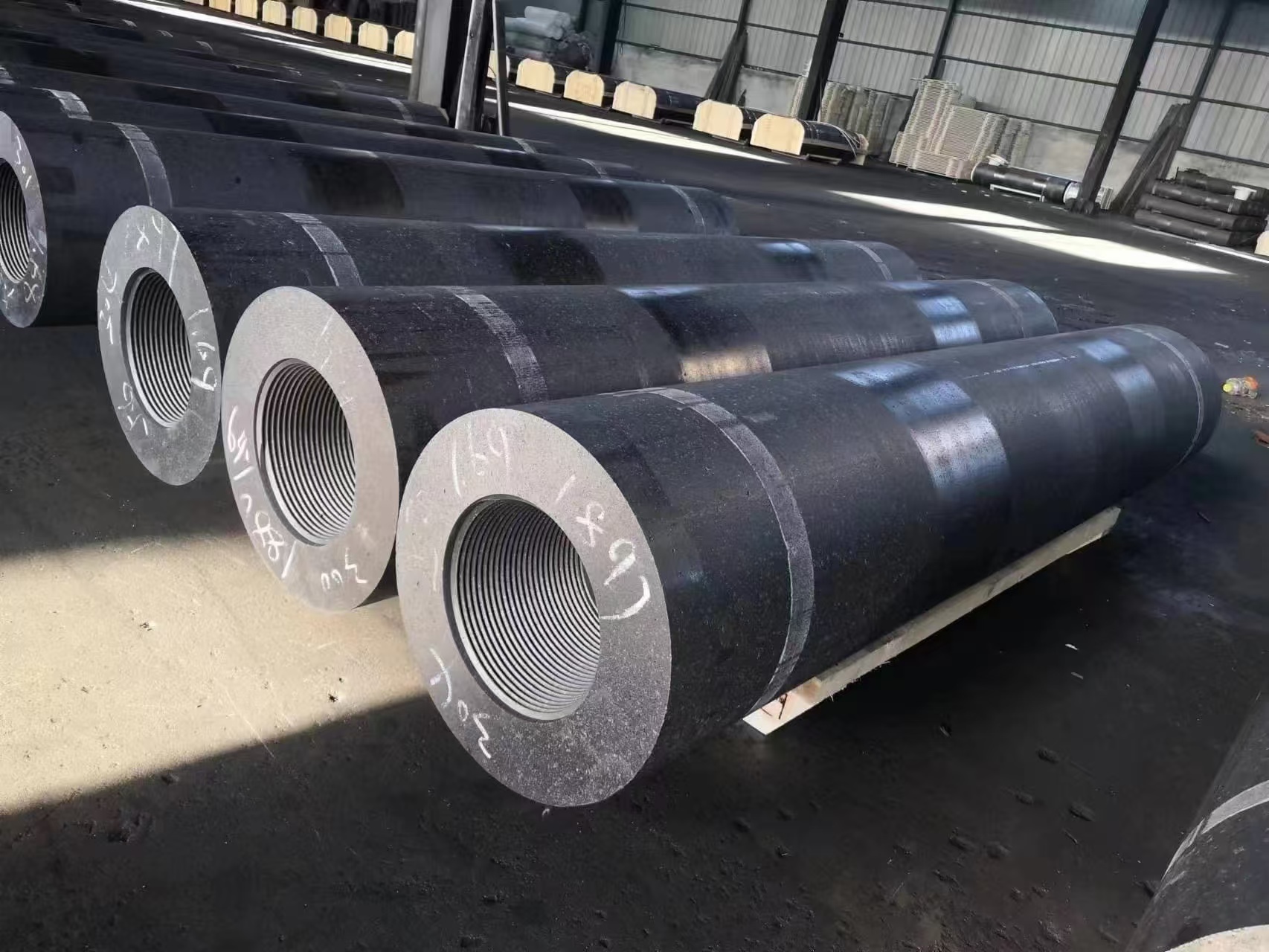Electrodes are conductors that help the current to enter or leave a medium. Various industries use them in several devices for different applications. One of their most common uses is in electric arc furnaces (EAFs) for steelmaking. While electrodes can be made from different conductive materials, graphite is the most preferred choice. Wondering what can be the reasons? Read this post until the end.
Table of Contents
Toggle
Properties Making Graphite Ideal for Electrodes
Graphite is a form of carbon, known for its crystalline structure and metallic finish. Its high electrical conductivity, thermal stability, and several other features make it suitable for electrode making.
Let us explore all the characteristics of graphite that make it the best electrode material.
High Electrical Conductivity
Electrodes require high electrical conductivity to transfer charge quickly to equipment. Furthermore, they have to maintain stable performance during electrochemical reactions.
For example, efficient electrical conductivity is crucial for an electric arc furnace to transfer electrical energy into heat. After all, improper heat can affect the steel smelting process.
Graphite is a remarkable electrical conductor, so companies use it for making electrodes. This carbon allotrope has a layered structure arranged in a hexagonal pattern, which supports the free movement of electrons between layers.
Besides high electrical conductivity, graphite electrodes can hold high current loads.
Resistance to Thermal Shock
Another reason companies choose graphite for electrode manufacturing is that it can withstand high thermal shock.
As graphite has a low coefficient of thermal expansion, it can endure sudden changes in temperature.
Graphite can withstand temperatures ranging between -400°F and 850°F, in an oxidized atmosphere.
Thermal shock can affect the efficiency of electrodes in various ways. For instance, it can cause electrode structural failure. Moreover, it can shorten the performance and service life of an electrode.
Electrodes may face thermal shock during steelmaking in electric arc furnaces. Even during arc welding, electrodes are exposed to rapid heating and cooling.
Electrodes made of other materials can’t endure this rapid change in temperature. Therefore, graphite is a popular choice for making electrodes.
High Heat Endurance
Graphite can survive high heat exposure. After all, its melting point is 3650°C. As a result, electrodes made of graphite endure a high-heat environment.
They can even sustain the maximum temperature of a UHP electric arc furnace. The temperature of such furnaces can reach up to 3500°C. Generally, the temperature is as high as this during the smelting of steel.
Graphite-based electrodes do not lose their structural integrity in extreme heat. The layered structure of graphite atoms helps it spread out heat quickly.
It is not easy for electrodes made of other materials to maintain their performance in such a high-heating environment.
Durability
The graphite compound is known for its high mechanical strength. While it comes in various grades, graphite’s tensile power ranges between 20 and 40 MPa.
Due to high structural integrity, manufacturers use it to make electrodes. After all, electrodes maintain their integrity in extreme heat and mechanical pressure.
Graphite electrodes do not crack. They do not wear out under the high pressure of an electric furnace.
Meanwhile, they can bear the intense pressure of the electric arc furnace steel melting process.
Easy to Mold
You can easily mold graphite material into different shapes. It is another quality that makes graphite ideal for electrode making.
The atomic structure of graphite has a weak intermediate bond making it easy to shape and mold.
Graphite electrodes are made in diverse sizes depending on their applications. They have unique sizes for different industries.
Even electric furnaces of distinct types need graphite electrodes in diverse sizes and specifications.
High Chemical Stability
Chemical inertness must be a primary feature of an electrode. Electrodes have to perform in different environments. Consequently, they can’t react with chemicals and gasses.
The good thing is that graphite electrodes are highly chemical resistant. They do not react when exposed to acidic or alkaline atmospheres. Remember, these environments are common in various metal processing applications.
Graphite electrode rod can uphold their integrity for a long period. They serve their functions even in chemical surroundings. As a result, companies use them in batteries, electric furnaces, and fuel cells.
Besides this, the chemical inertness of graphite electrodes minimizes the risk of numerous hazardous reactions.
Self-Lubricating Properties
These electrodes are particularly beneficial for foundries and EAFs. Due to self-lubrication, graphite electrodes cause less friction to the furnace and itself. It means you will spend less money on maintenance. Moreover, electrodes will last for a long time.
Graphite-made electrodes are preferred for numerous electrochemical and industrial processes because of their self-lubricating properties.
Cost Effective
Graphite electrodes are also easy on the pocket. Companies use them in electric arc furnaces that consume significantly less energy than traditional furnaces. It naturally lowers the overall operational cost.
Furthermore, as graphite electrodes have high electrical conductivity, they lose negligible heat during the process. Therefore, electric arc furnaces heat and melt steel in less time.
Graphite electrodes feature high mechanical and thermal strength. As a result, they last for more hours than carbon electrodes.
Sustainability
Sustainable industrial practices are crucial to minimizing pollution and preserving our natural resources.
Graphite electrodes are considered environmentally friendly.
Electric arc furnaces employ these electrodes to melt metal scraps and make new steel products. It minimizes the need for mining new raw materials.
Additionally, graphite electrodes have low carbon emissions compared to conventional steelmaking energy sources.
Conclusion:
Graphite has numerous properties, making it the most suitable material for manufacturing electrodes. From high energy transfer, and heat endurance to machinability, graphite excels in all factors.
Unlike other materials, graphite does not break down in high thermal shock and heat. These are common scenarios with electric arc furnaces when making steel.
Also, it is easy to shape electrodes. Consequently, companies customize the dimensions of electrodes based on their applications.

